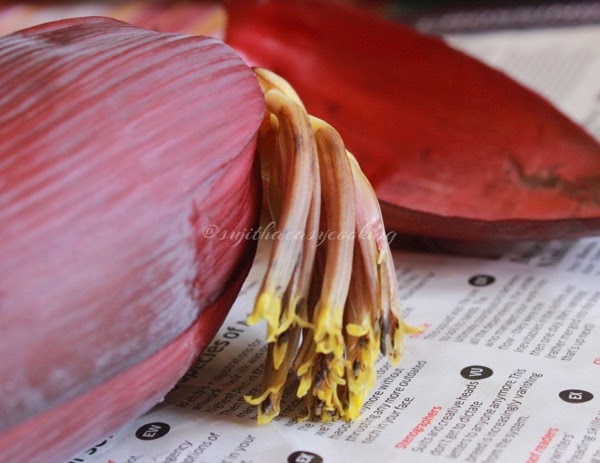Vazhaipoo Cleaning
 The process of cleaning a banana flower, known as “vazhaipoo” in South Indian cuisine, requires careful attention to detail due to its structure and the presence of unwanted parts. People have developed specific methods to clean banana flowers effectively.
The process of cleaning a banana flower, known as “vazhaipoo” in South Indian cuisine, requires careful attention to detail due to its structure and the presence of unwanted parts. People have developed specific methods to clean banana flowers effectively.
Before starting, people gather the necessary ingredients such as the banana flower, buttermilk or water mixed with yogurt (to prevent discoloration), and optionally lemon or tamarind for additional cleaning.

The outer layers of the banana flower are tough and not edible. People peel away these layers one by one until they reach the tender, inner florets. The discarded outer layers are usually placed on a disposable surface or newspaper.

Each floret has a central stamen, a string-like structure that is bitter and not suitable for consumption. People carefully remove and discard the stamen from each floret. This process can be time-consuming, requiring patience and attention to detail.
To prevent discoloration and to further clean the banana flower, the chopped florets are soaked in buttermilk or water mixed with yogurt. This step also helps in removing any impurities.
After soaking for a specific period (usually 10-15 minutes), the banana flower is drained to remove excess liquid. It may also be rinsed under cold running water to ensure thorough cleaning.
Some people rub the cleaned banana flower with a piece of lemon or tamarind. This step is optional and can help reduce discoloration and enhance cleanliness.

The cleaned banana flower is then inspected to ensure that all outer layers, stamen, and impurities are removed. It should have a fresh aroma and be ready for use in various recipes.





